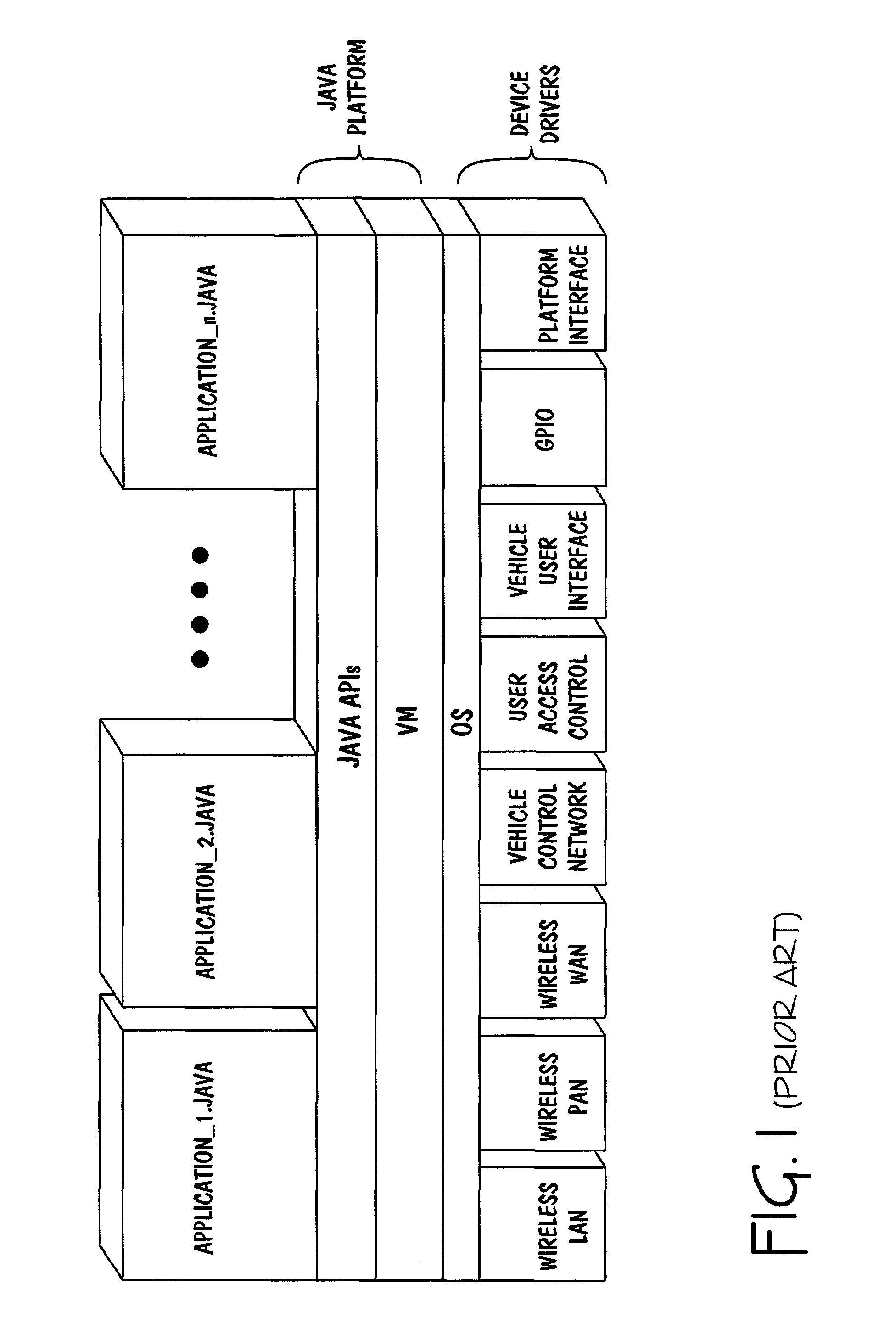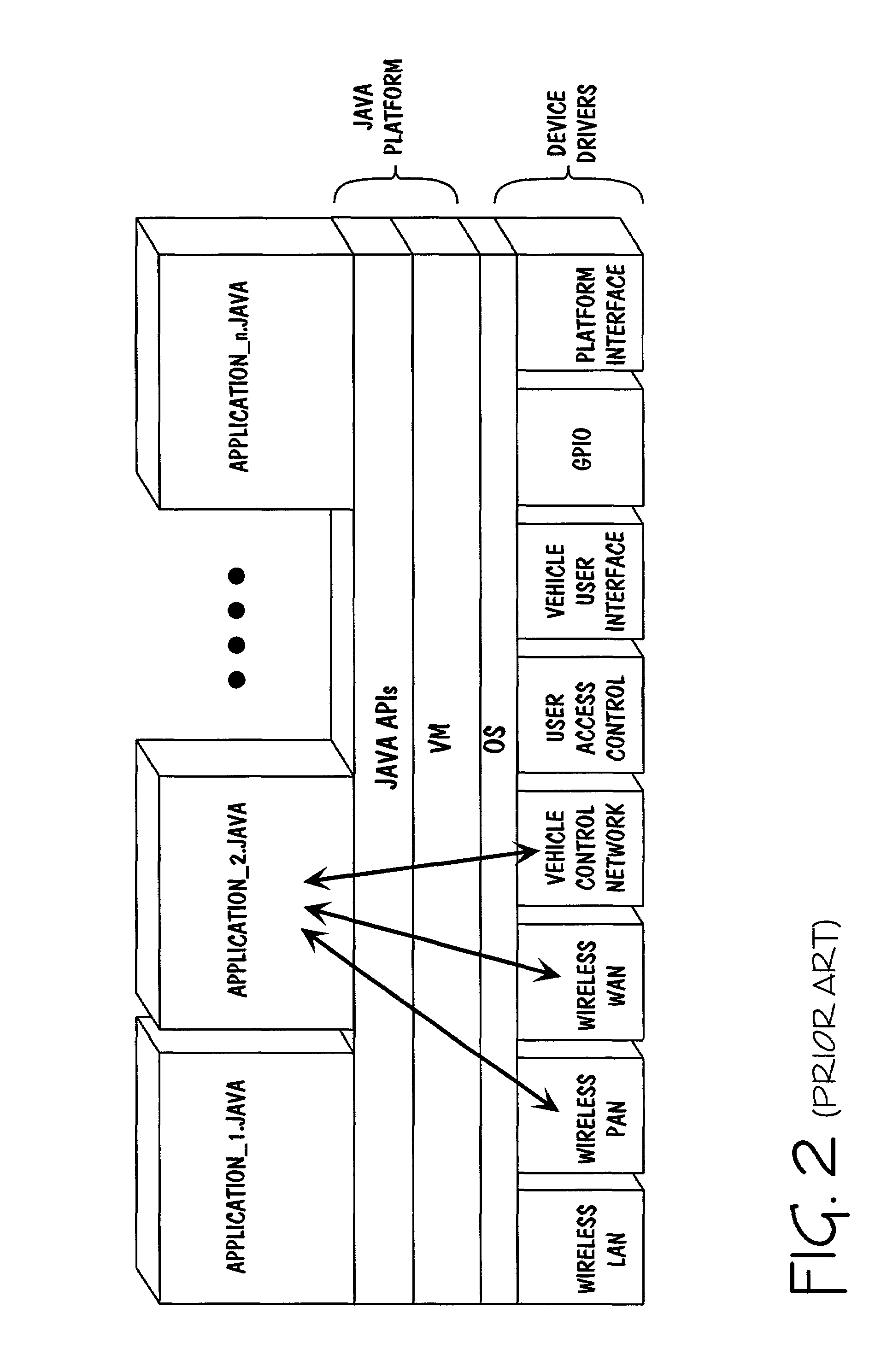Open platform architecture for shared resource access management
a technology of open platform and resource access management, applied in the field of open platform architecture for shared resource access management, can solve the problems of high cost per unit connection time, inability to achieve portability and validation benefits of open standards, and serious limitations of open standards
- Summary
- Abstract
- Description
- Claims
- Application Information
AI Technical Summary
Problems solved by technology
Method used
Image
Examples
Embodiment Construction
[0075]A telematics platform and corresponding platform software architecture, collectively referred to herein as a telematics system, is described below that supports the design of software in systems that handle numerous requests for access to physical resources such as communications devices, user interfaces, sensors, and / or actuators. This platform and software architecture provides for maximal use of standard operating systems, device drivers, and means for exchanging software applications, while supporting secure shared access to devices and transactional cost accounting. The platform software architecture supports for example Java and OSGi standards directly and eliminates the need for non-standard and proprietary extensions. The software architecture provides each Java application assured secure network access, network and resource sharing, network access accounting, and shared secure access to system interfaces (e.g., those within a vehicle). This is accomplished without int...
PUM
 Login to View More
Login to View More Abstract
Description
Claims
Application Information
 Login to View More
Login to View More - R&D
- Intellectual Property
- Life Sciences
- Materials
- Tech Scout
- Unparalleled Data Quality
- Higher Quality Content
- 60% Fewer Hallucinations
Browse by: Latest US Patents, China's latest patents, Technical Efficacy Thesaurus, Application Domain, Technology Topic, Popular Technical Reports.
© 2025 PatSnap. All rights reserved.Legal|Privacy policy|Modern Slavery Act Transparency Statement|Sitemap|About US| Contact US: help@patsnap.com



